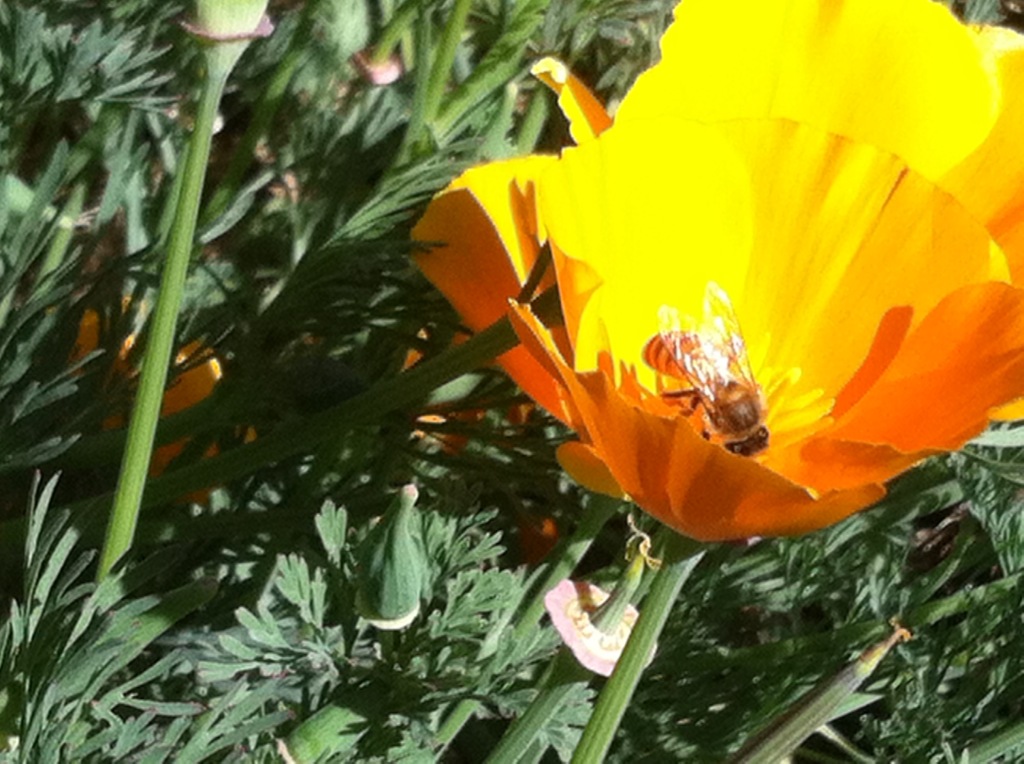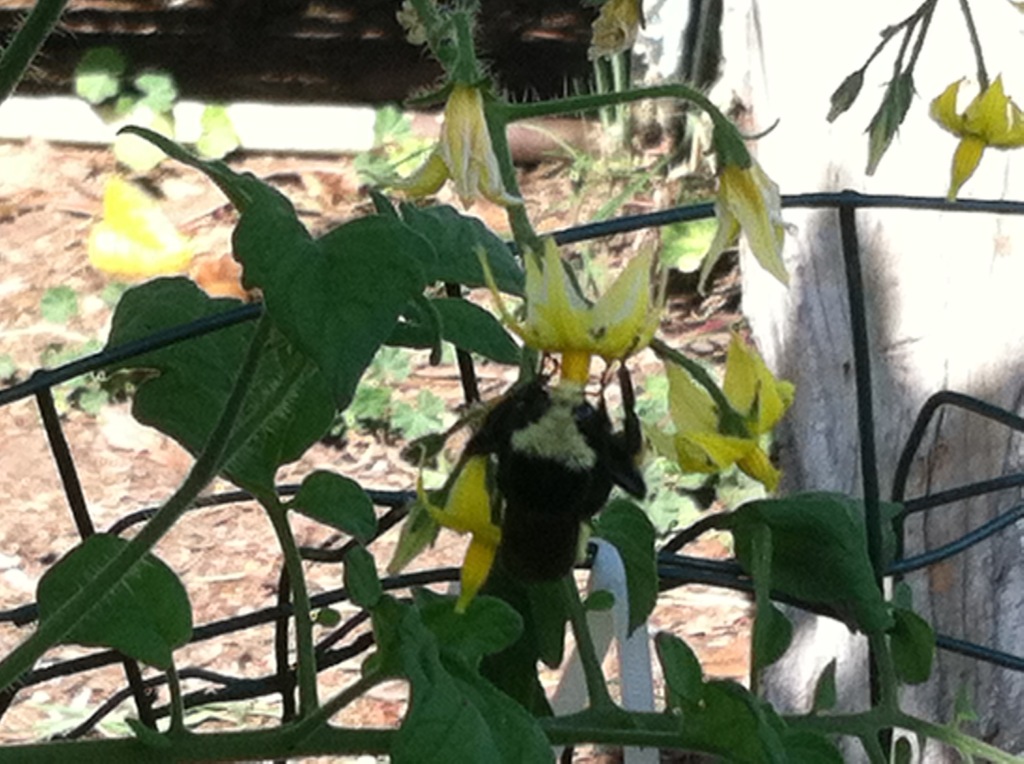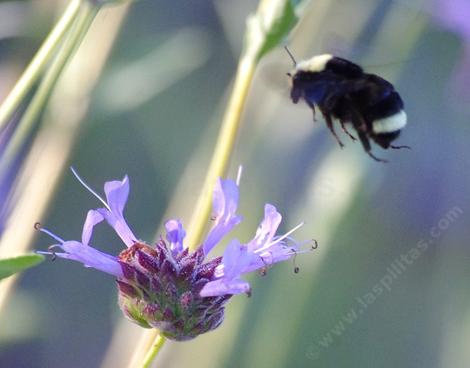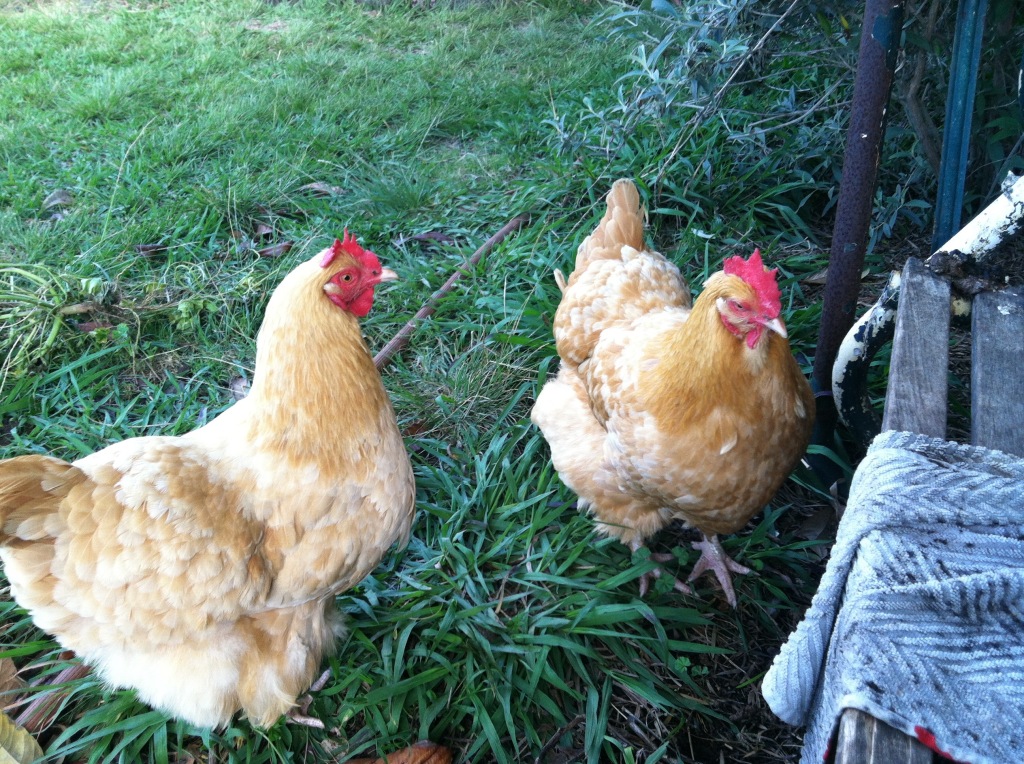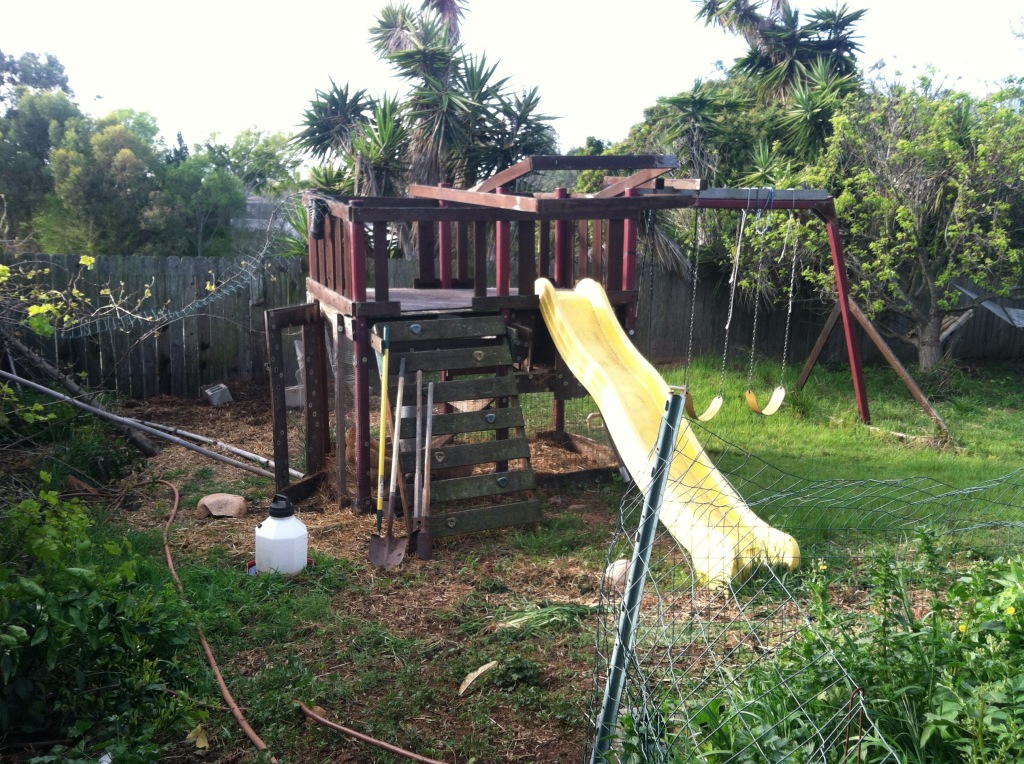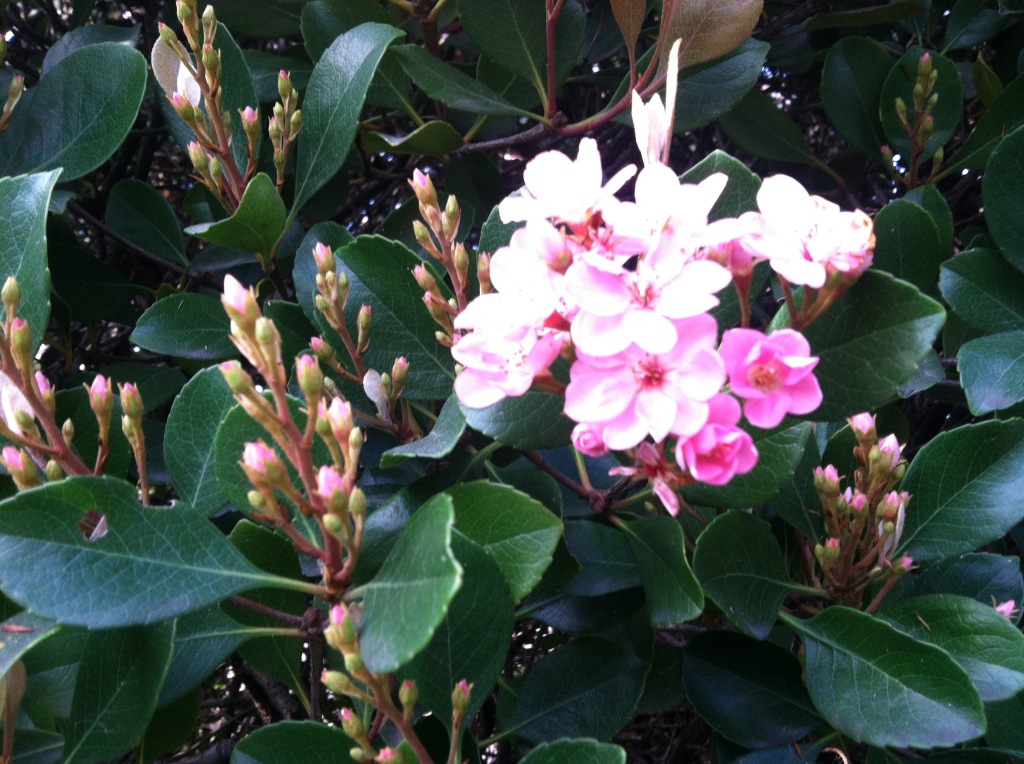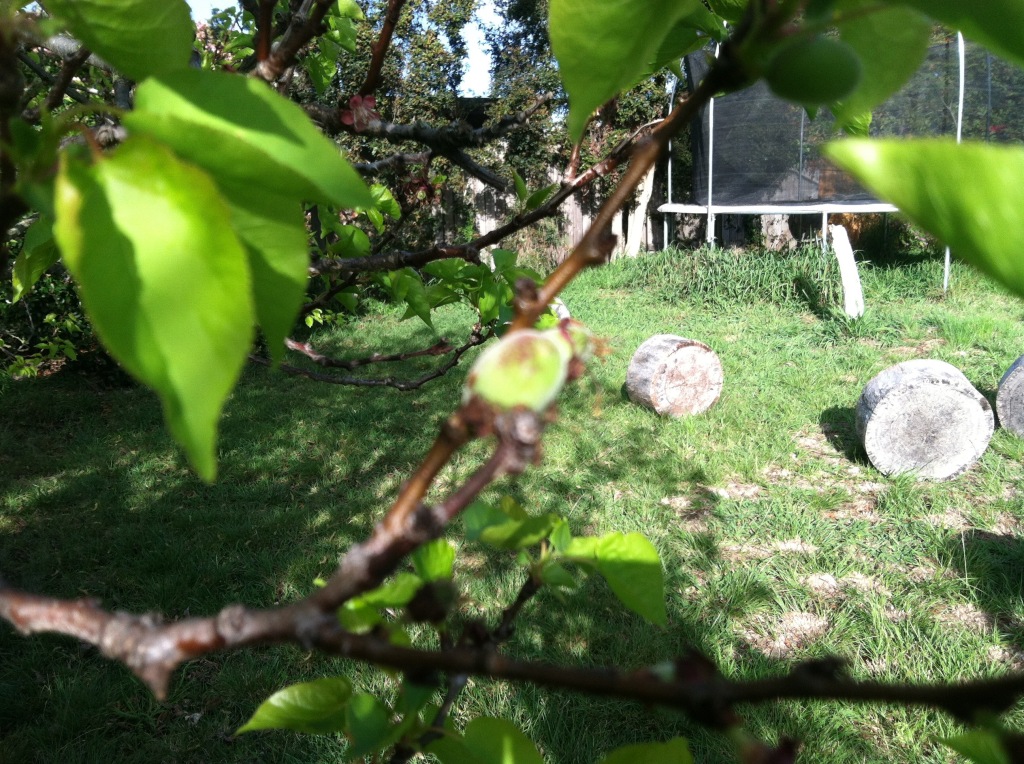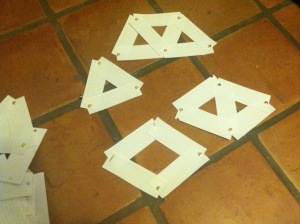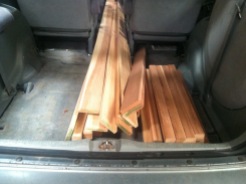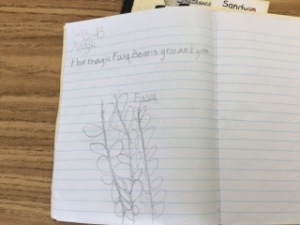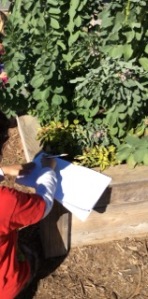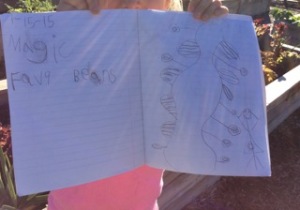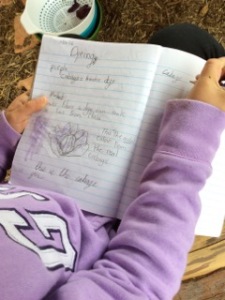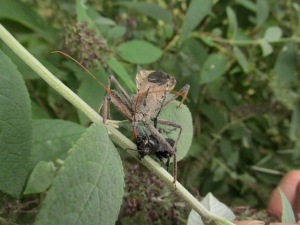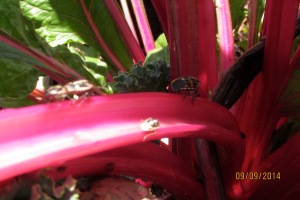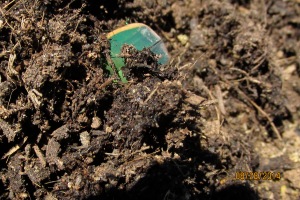Finally, someone is pollinating my garden. I was a little freaked out when my sunflowers seemed to go for weeks without bees visiting. But today, the California poppies are full of bees, and this yellow-faced bumblebee paid a visit to my tomatoes. My photos aren’t great — he was a moving target — but here is one from the Las Pilitas website — that wonderful garden treasure trove!
Spring is here and Rain at Last! March 12, 2016
Early, cool spring is my favorite time of year.
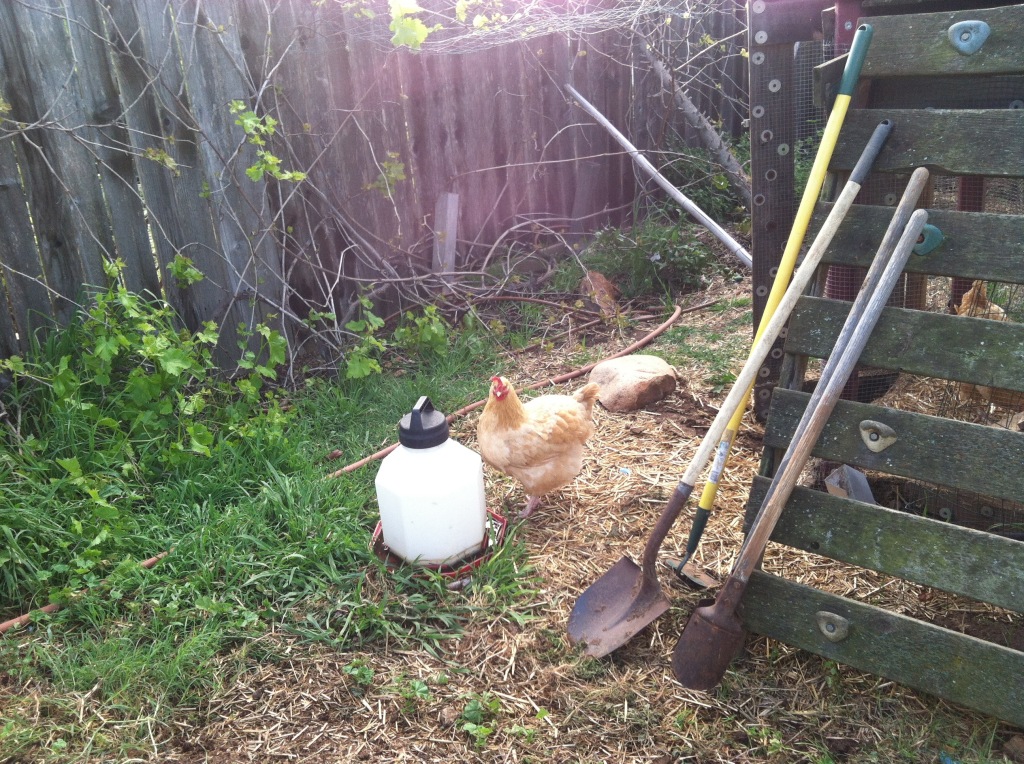
 Last year, we got only a couple of inches of rain all year. This year, while El Nino has definitely not lived up to its promise in southern California, at least we are getting a real spring. The air is clean and cool, our apricot tree has blossomed already and is producing tiny fruit, the Indian Hawthorne bush is ready to explode with blossoms, weeds are finding a way, and the chickens are delighted with the growing garden.
Last year, we got only a couple of inches of rain all year. This year, while El Nino has definitely not lived up to its promise in southern California, at least we are getting a real spring. The air is clean and cool, our apricot tree has blossomed already and is producing tiny fruit, the Indian Hawthorne bush is ready to explode with blossoms, weeds are finding a way, and the chickens are delighted with the growing garden.
Building Bridges in the Garden March 7, 2016
Problem Solving Opportunity:
Last year, students in the Cardiff School garden helped build a simple arch trellis out of rebar and hardware cloth to hold up four new passion fruit vines. I had read that it would take 3 years for the vines to produce fruit, so I figured the trellis was all we would need.
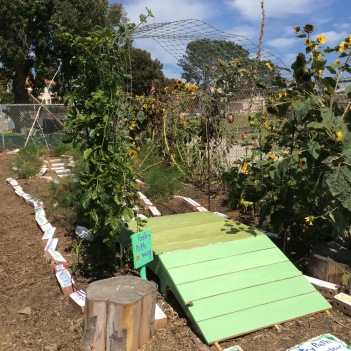
Imagine our surprise when the start of the new school year revealed a four fully-established passion fruit vines heavy with fruit! Within months, the entire trellis collapsed inward, completely filling in the tunnel with a mass of vines.
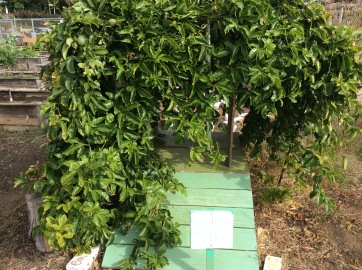
Seeing an opportunity in the problem, the Cardiff MAC (Mixed Age, gr. 1-3) class , where I teach two afternoons a week, embarked on a 6-week mission to build a new trellis. Since a trellis is a type of bridge – a span helping something or someone cross a divide – we began with a study of bridges in order to understand the best way to build a trellis.
Resources
We began by looking at a Powerpoint presentation with pictures of different types of bridges from all over the world. We learned the types of bridges: Beam, Arch and Suspension, and looked at pictures of each type. We learned that a bridge needs to be the right strength to hold up the load, and the right size to span a particular width and allow something else to pass underneath. We learned the basic parts of a bridge: the piers that hold up the deck of a bridge, and the span is the space between piers.
These books were especially helpful. They helped us learn about types of bridges and how they are constructed, gave us experience with narratives from the lives of people who build bridges, and gave us ideas for experimenting with bridge building ourselves.
Experimenting with Bridges
We experimented with tension cables to see how they could work to hold up a load in a suspension bridge. We wondered how many children it would take to pull on a rope to hold up the weight of a seated teacher – me! (It took six children – three on each side, holding on and leaning back.)
Working in groups of two, we made plank bridges out of paper and blocks to hold up pennies. We experimented with making the deck stronger with more pieces of paper and by putting an arch of paper underneath. We also discovered that the closer the piers were, the more pennies the bridge would hold.
Next, we learned how engineers add strength to bridges to make them especially strong, using arches and triangular-shaped struts for strength. We looked at pictures of strong bridges that used struts. Then, working with a partner, we made our own struts out of index card strips and brads.

Trellis Design
Now that we knew what made bridges strong, we were ready to design a trellis that was:
- Strong enough to hold up four heavy passion fruit vines;
- Tall enough for a tall adult to pass underneath;
- Wide enough for our ramp to fit underneath;
- Simple to build;
- Pretty to look at;
- 84 inches tall x 48 inches wide x 26 inches deep
We began by looking at photos of trellises and noticing what made them appealing and strong. In our writers’ notebooks, each child began by sketching his/her own trellis, with a front view, side view, and top view.
Then, each child shared their design with the other students at their table. They came up with a group design for each table showing front, side and top views.
At a class meeting, each group got up to share their work on the document camera. They explained their design, and what they felt were the most important elements of the design.
Then, working as a class, we took the best parts of each design to make a single class design that included all the necessary elements and proper dimensions for the front, side and top of the trellis.
Mrs. Elliott took the design to Dixieline with a list of supplies, and a very kind man named Gerard helped her choose the wood, and then cut it to the proper sizes.
Building the Trellis — Day One
During garden time, the class divided into three groups. Mrs. Elliott worked with one group while Brodie’s Dad, Mike worked with another group, and garden teacher, Mr. Brink, worked with the last group in the garden. Students learned how to properly use a Phillips head screw driver and a power screw driver to drive wood screws into predrilled holes.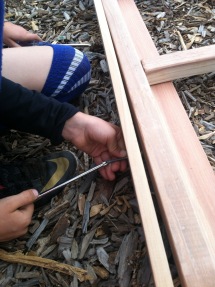



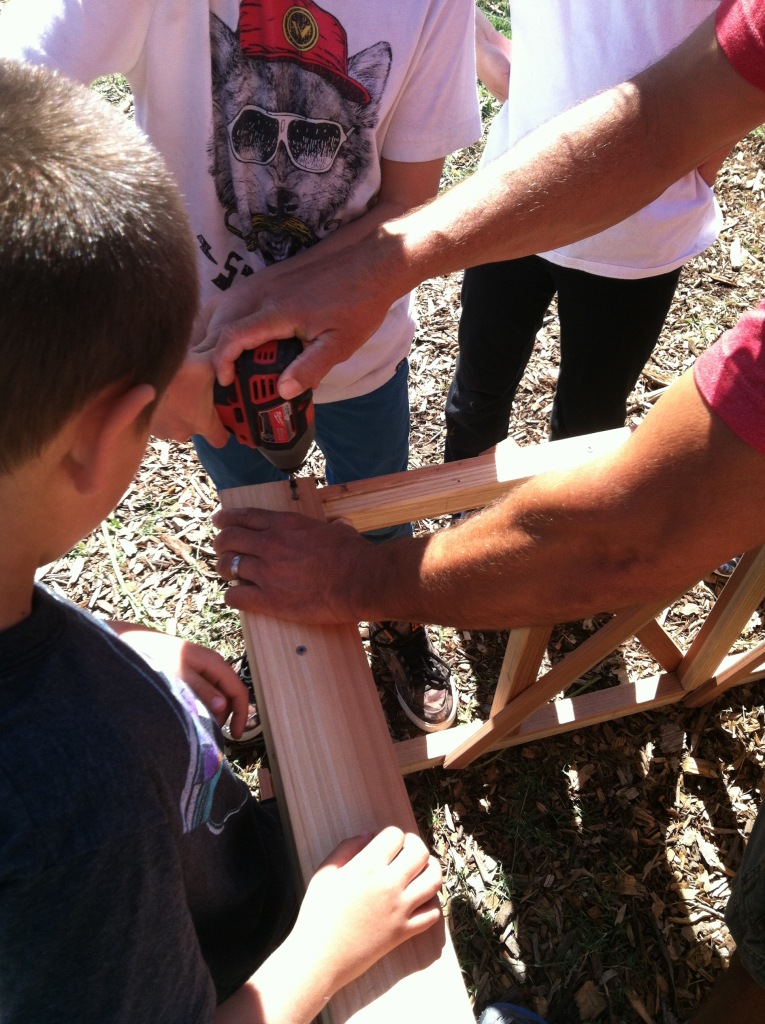
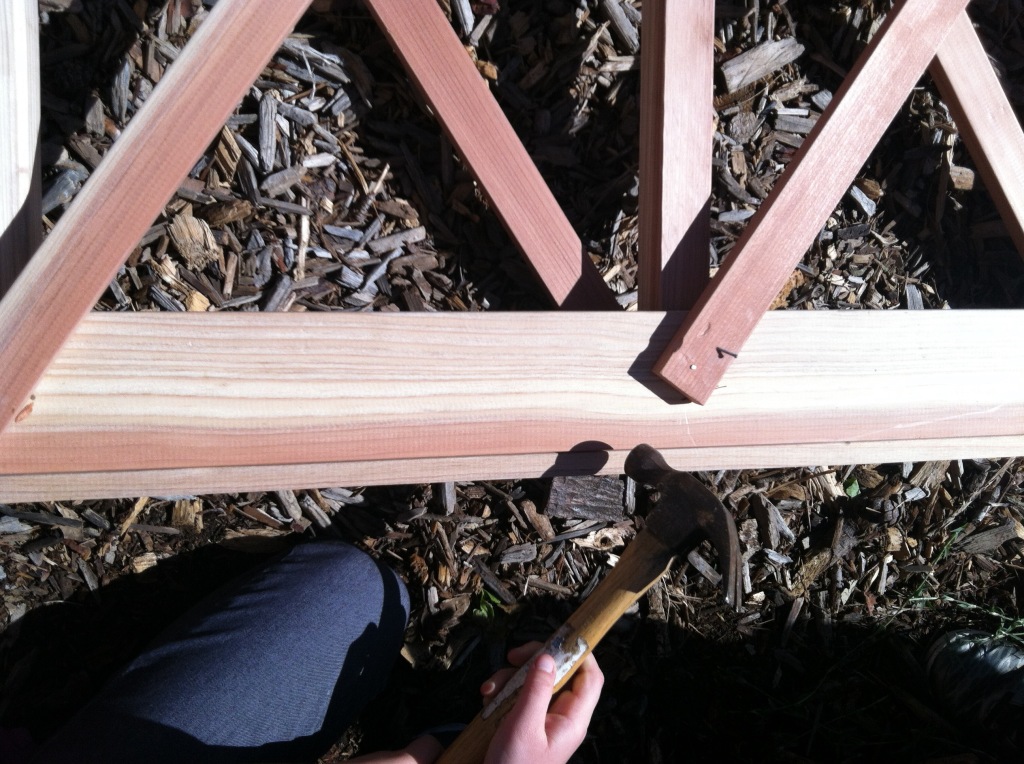

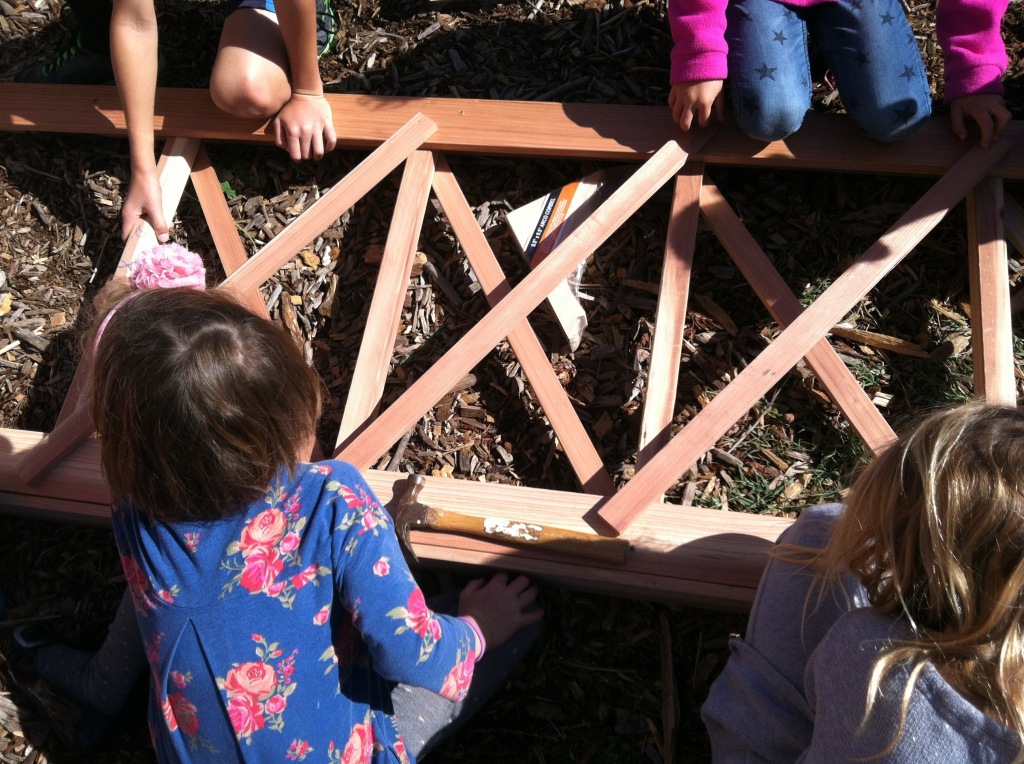
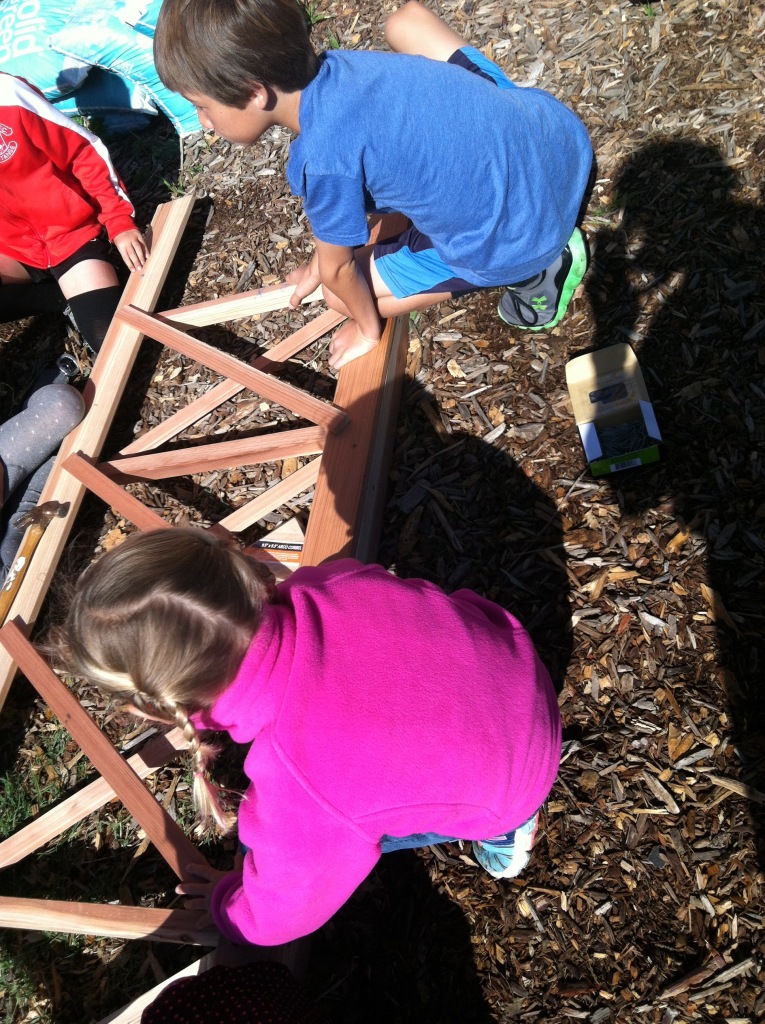
Inspirational Compost! April 3, 2015
This week was a week to deal with our compost in the school garden:
- moving a bin — and finding a million mice;
- aerating the large pile
- watering the pile
- writing about everything we saw.
Here are some of the things we wrote about. Compost is very inspirational! Who knew?
Clairemont Produce Exchange February 22, 2015
My neighborhood has a produce exchange once a month. This month I brought nine bundles of collards and bok toy, with ten leaves in each bundle. In exchange, I got a bag of lemons and oranges, celery, beets, fennel and a few baked goods.
Weeds Found a Way in our Garden — So We Made Art! February 1, 2015
Kindergarteners read Weeds Find a Way, by Cindy Jenson-Elliott, then pulled weeds and then learned their names. They drew several iterations of their chosen weed and worked hard to get the details right in their pictures. Here are the results.

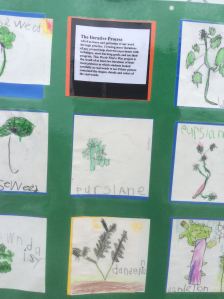
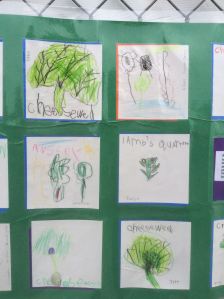

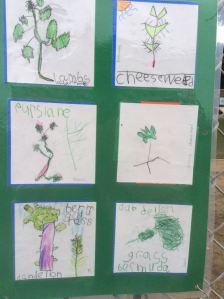

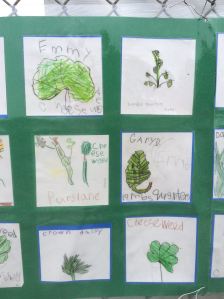
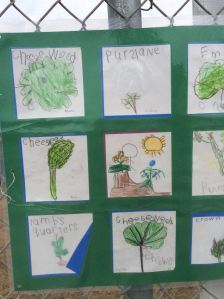
Jack and the Beanstalk — Magic Fava Beans and Peas January 28, 2015
Our ripening Peas and Fava Beans in the school garden were an opportunity to re-read Jack and the Beanstalk. This particular wonderful version has a great place where the man trying to get Jack’s cow says something like, “I have these magic beans I will trade you for your cow. But be careful with them. I lost the instructions for them, and I can’t remember what they do.”
The children wrote instructions for their magic beans. They wrote about what magic powers their own fava beans or peas have in our school garden!
Purple Cabbage Dye
I run two school garden programs. At one of my school gardens, we harvested the purple cabbage we planted a couple of months ago and made dye for linen. It was a good opportunity for Common Core informational writing!
Life and Death in the Garden October 10, 2014
Visiting Wichita, Kansas last week, I was impressed to see a front-page article on the return of the Monarch butterflies on their southern migration. http://www.kansas.com/living/home-garden/annie-calovich/article2497920.html
After 3 years of low butterfly numbers, the people of Wichita have planted lots of milkweed, and the butterflies were out in force.
And the monarchs weren’t the only ones. At my friend Margie’s house, there were butterflies of all sorts on her butterfly bush, along with some more deadly critters, such as this giant Assassin bug eating a wasp.
Bugs in the Garden September 14, 2014
It is school garden season again, and this year I am teachinggardening to grades K – 5. We’ve been busy cleaning up, and have found lots of very wonderful bugs in the process. Fig Beetles dig in the dirt of lay their eggs — and so I find their babies, grubs, in the garden beds. Harlequin bugs, a little bug I haven’t identified yet, and cabbage butterflies, are among our latest many-legged friends to visit the garden.
This was a record year for weeds in the Explorer Garden! A whole crop of amazing parent, staff and community volunteers helped get it ready to use again.
This year’s garden plan will include a garden remodel, courtesy of a team of 9th graders from High Tech High, and our Whole Foods Foundation grant. They will raze our garden to the ground, pull out rotting raised beds, and create a garden plan using Sketch Up. We can’t wait for the work to begin — sometime in mid to late October. Meanwhile, we can enjoy the garden as it is!
